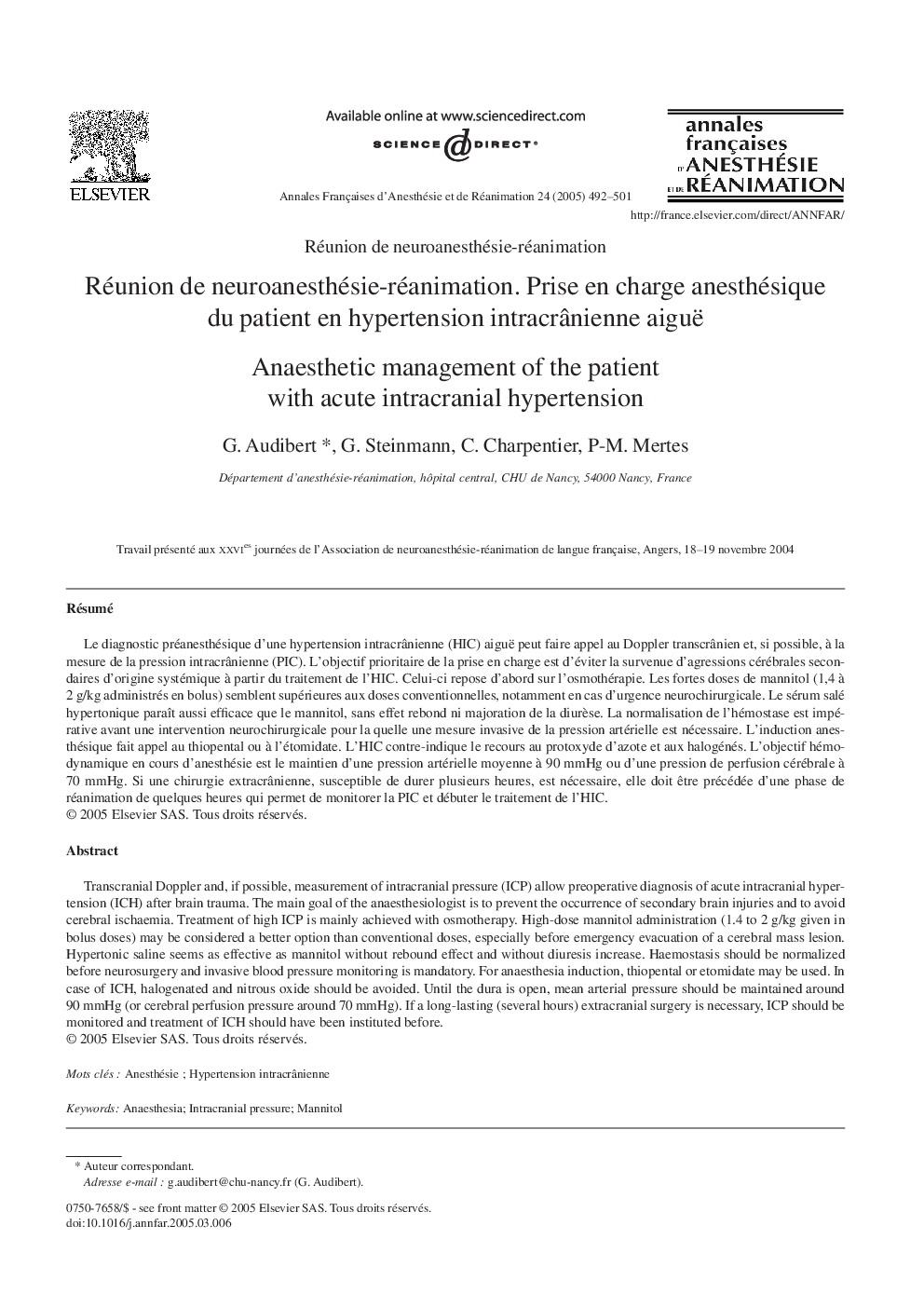| کد مقاله | کد نشریه | سال انتشار | مقاله انگلیسی | نسخه تمام متن |
|---|---|---|---|---|
| 9091876 | 1148986 | 2005 | 10 صفحه PDF | دانلود رایگان |
عنوان انگلیسی مقاله ISI
Réunion de neuroanesthésie-réanimation. Prise en charge anesthésique du patient en hypertension intracrânienne aiguë
دانلود مقاله + سفارش ترجمه
دانلود مقاله ISI انگلیسی
رایگان برای ایرانیان
کلمات کلیدی
موضوعات مرتبط
علوم پزشکی و سلامت
پزشکی و دندانپزشکی
بیهوشی و پزشکی درد
پیش نمایش صفحه اول مقاله

چکیده انگلیسی
Transcranial Doppler and, if possible, measurement of intracranial pressure (ICP) allow preoperative diagnosis of acute intracranial hypertension (ICH) after brain trauma. The main goal of the anaesthesiologist is to prevent the occurrence of secondary brain injuries and to avoid cerebral ischaemia. Treatment of high ICP is mainly achieved with osmotherapy. High-dose mannitol administration (1.4 to 2Â g/kg given in bolus doses) may be considered a better option than conventional doses, especially before emergency evacuation of a cerebral mass lesion. Hypertonic saline seems as effective as mannitol without rebound effect and without diuresis increase. Haemostasis should be normalized before neurosurgery and invasive blood pressure monitoring is mandatory. For anaesthesia induction, thiopental or etomidate may be used. In case of ICH, halogenated and nitrous oxide should be avoided. Until the dura is open, mean arterial pressure should be maintained around 90Â mmHg (or cerebral perfusion pressure around 70Â mmHg). If a long-lasting (several hours) extracranial surgery is necessary, ICP should be monitored and treatment of ICH should have been instituted before.
ناشر
Database: Elsevier - ScienceDirect (ساینس دایرکت)
Journal: Annales Françaises d'Anesthésie et de Réanimation - Volume 24, Issue 5, May 2005, Pages 492-501
Journal: Annales Françaises d'Anesthésie et de Réanimation - Volume 24, Issue 5, May 2005, Pages 492-501
نویسندگان
G. Audibert, G. Steinmann, C. Charpentier, P-M. Mertes,